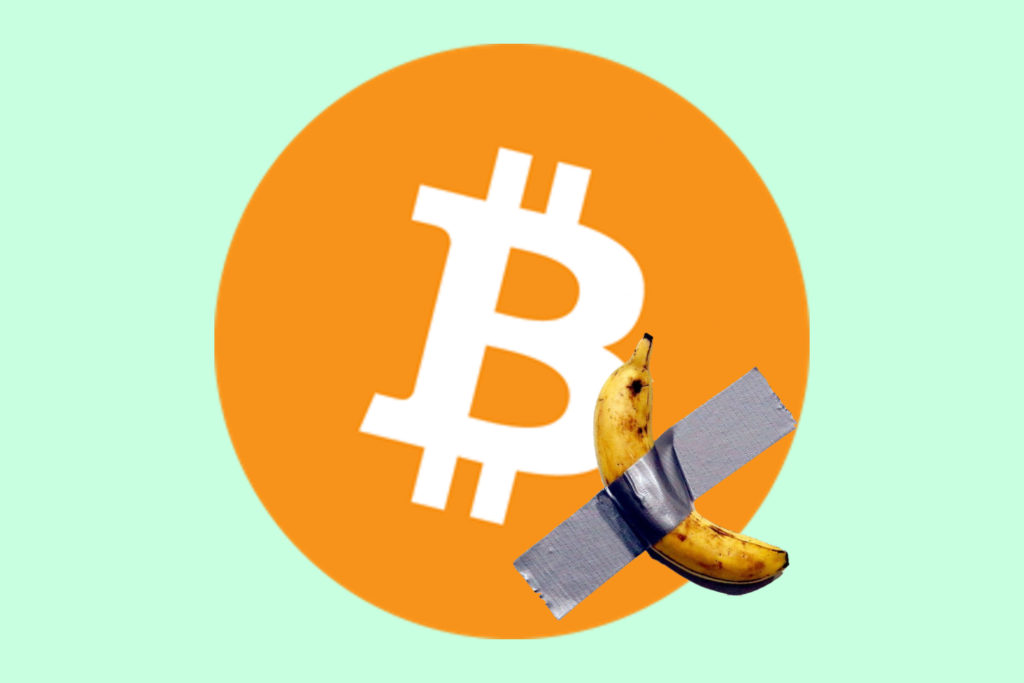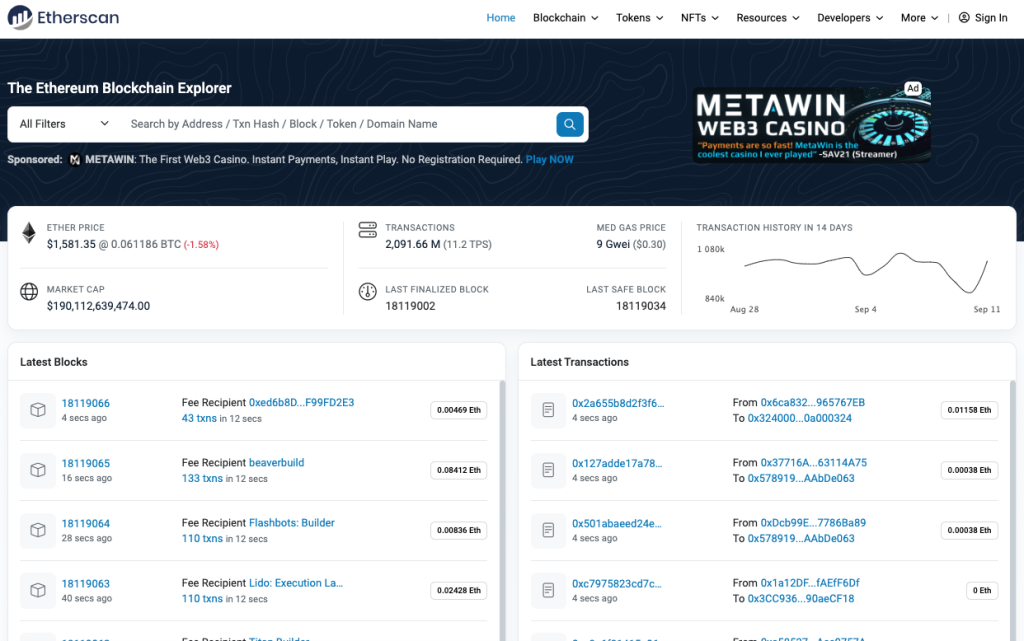
Welcome to our comprehensive guide on understanding Bitcoin. In recent years, Bitcoin has become a household name and a hot topic of discussion in the financial world. As a decentralized digital currency, Bitcoin has revolutionized the way we think about money, transactions, and investments.
In this blog post, we aim to provide you with a complete understanding of Bitcoin, from its basics to its future potential. Whether you are a beginner looking to grasp the fundamentals or an experienced investor seeking insights into the market, this guide will cover everything you need to know.
We will start by delving into the foundations of Bitcoin, exploring how it works and the technology behind it. You will learn about the blockchain, the revolutionary technology that underpins Bitcoin and enables secure and transparent transactions. Additionally, we will demystify the concept of Bitcoin mining, explaining how new Bitcoins are created and the role it plays in the overall system.
Moving on, we will explore the practical side of Bitcoin, discussing topics such as investing and managing risk. Bitcoin’s market volatility is well-known, and we will provide you with the knowledge to navigate this exciting yet unpredictable landscape. You will also learn how to buy Bitcoin and safeguard your investments, as we delve into the intricacies of securing your Bitcoin wallet and avoiding scams.
Looking ahead, we will explore the future of Bitcoin and the potential it holds. We will discuss predictions for Bitcoin’s future, as well as the factors that could impact its growth and mainstream adoption. Moreover, we will examine the role of Bitcoin in the global economy and its potential to disrupt traditional financial systems.
Lastly, we cannot ignore the importance of Bitcoin security. As a digital currency, it is essential to understand how to protect your Bitcoin holdings from potential threats. We will provide you with valuable insights into securing your Bitcoin wallet, recognizing and avoiding scams, and the role played by regulatory bodies in ensuring Bitcoin security.
Whether you are an enthusiast, an investor, or simply curious about this digital revolution, this comprehensive guide will equip you with the knowledge to understand, navigate, and make informed decisions in the world of Bitcoin. So, let’s dive in and uncover the fascinating world of Bitcoin together.
Bitcoin Basics: An Introduction
Bitcoin Basics: An Introduction
Bitcoin, often referred to as digital gold, is a decentralized digital currency that was introduced in 2008 by an anonymous person or group of people using the pseudonym Satoshi Nakamoto. It is a form of cryptocurrency that allows people to send and receive payments without the need for a central authority, such as a bank or government.
At its core, Bitcoin is based on a peer-to-peer network called the blockchain. This distributed ledger technology records all Bitcoin transactions and ensures their transparency and security. Unlike traditional currencies, which are issued and regulated by central banks, Bitcoin operates on a decentralized network of computers.
One of the key features of Bitcoin is its limited supply. There will only ever be 21 million Bitcoins in existence, making it a scarce asset. This scarcity, combined with its decentralized nature, has contributed to its value and popularity as a store of value and investment.
Bitcoin transactions are conducted using cryptographic techniques, making them secure and anonymous. Each transaction is verified by network participants called miners, who use powerful computers to solve complex mathematical problems. Once a transaction is verified, it is added to a block in the blockchain, which serves as a permanent record of all transactions.
As a digital currency, Bitcoin offers several advantages over traditional forms of money. It allows for fast and low-cost international transactions, eliminating the need for intermediaries and reducing transaction fees. Bitcoin also provides financial access to those who are unbanked or underbanked, as all you need is an internet connection to participate in the Bitcoin network.
However, it is important to note that Bitcoin also comes with its share of challenges and risks. Its price volatility has been a subject of much discussion, with significant price fluctuations occurring over short periods. Additionally, Bitcoin has faced criticism for its association with illegal activities due to its pseudonymous nature, although efforts are being made to enhance its regulatory framework.
In the following sections, we will explore the inner workings of Bitcoin, including the technology behind it, the process of mining, and how transactions are conducted. By gaining an understanding of these fundamentals, you will be well-equipped to explore the world of Bitcoin with confidence. So, let’s dive deeper into the fascinating world of Bitcoin and uncover its mysteries.
How Bitcoin Works
How Bitcoin Works
To truly understand Bitcoin, it is essential to delve into the inner workings of this revolutionary digital currency. In this section, we will explore the technology behind Bitcoin, the blockchain, and how transactions are conducted within the network.
The Blockchain Technology Behind Bitcoin
At the heart of Bitcoin is a technology called the blockchain. The blockchain is a decentralized and transparent public ledger that records all Bitcoin transactions. It serves as a tamper-proof and permanent record of every transaction ever made with Bitcoin.
The blockchain consists of a chain of blocks, where each block contains a set of transactions. When a new transaction occurs, it is verified and added to a block. Once a block is full, it is linked to the previous block, creating a chain of blocks. This chain of blocks forms the blockchain.
The blockchain is maintained by a network of computers, known as nodes, that participate in the Bitcoin network. These nodes work together to validate and verify transactions, ensuring the accuracy and security of the blockchain. Each node contains a complete copy of the blockchain and continuously updates it with new transactions.
Bitcoin Mining: How New Bitcoins are Created
Bitcoin mining is the process by which new Bitcoins are created and added to the Bitcoin supply. It is an essential aspect of the Bitcoin network, as it ensures the security and integrity of the blockchain.
Miners are individuals or groups of individuals who use powerful computers to solve complex mathematical problems. These problems require significant computational power, and the first miner to solve the problem is rewarded with a certain amount of Bitcoins.
The process of mining involves verifying and validating transactions. Miners collect a group of transactions and include them in a block. They then compete with other miners to solve a mathematical problem associated with the block. The first miner to solve the problem adds the block to the blockchain and is rewarded with newly minted Bitcoins.
As more miners join the network, the mathematical problems become increasingly difficult to solve. This ensures that new Bitcoins are created at a consistent rate, preventing inflation. Currently, the reward for mining a new block is 6.25 Bitcoins, but this reward is halved approximately every four years in an event known as the “halving.”
Bitcoin Transactions: How They Work
Bitcoin transactions are conducted using cryptographic techniques, ensuring their security and authenticity. When someone wants to send Bitcoin to another person, they create a transaction and broadcast it to the Bitcoin network.
A Bitcoin transaction contains three key components: the input, the output, and a digital signature. The input refers to the Bitcoin that is being spent, while the output represents the recipient’s Bitcoin address. The digital signature is a cryptographic proof that verifies the transaction’s authenticity and ensures that only the owner of the Bitcoin can spend it.
Once a transaction is broadcasted to the network, it is picked up by miners who include it in a block. Miners verify the transaction’s validity by checking the digital signatures and ensuring that the sender has sufficient funds. Once the transaction is verified, it is added to the blockchain, becoming a permanent and immutable record.
Bitcoin transactions are processed relatively quickly compared to traditional banking systems. However, the confirmation time can vary depending on the network congestion and the transaction fee paid. It is common for larger transactions to have higher fees to incentivize miners to include them in blocks promptly.
In the next section, we will explore the world of investing in Bitcoin, including understanding market volatility, buying Bitcoin, and managing risk. By gaining a deeper understanding of these aspects, you will be better prepared to navigate the Bitcoin investment landscape. So, let’s continue our journey into the realm of Bitcoin investing.
Investing in Bitcoin
Investing in Bitcoin
Bitcoin has gained significant attention as an investment asset, with many individuals looking to capitalize on its potential for growth. In this section, we will explore the world of Bitcoin investing, including understanding market volatility, buying Bitcoin, and managing risk.
Understanding Bitcoin Market Volatility
One of the key characteristics of Bitcoin is its price volatility. The value of Bitcoin can fluctuate significantly over short periods, presenting both opportunities and risks for investors. Understanding market volatility is crucial for making informed investment decisions.
Several factors contribute to Bitcoin’s volatility, including market demand, investor sentiment, regulatory developments, and macroeconomic events. It is important to stay updated on the latest news and trends that can impact Bitcoin’s price movements. Additionally, conducting thorough research and analysis can help identify potential patterns and trends in the market.
How to Buy Bitcoin
Buying Bitcoin is the first step for many investors looking to enter the cryptocurrency market. There are several methods to purchase Bitcoin, including cryptocurrency exchanges, peer-to-peer platforms, and Bitcoin ATMs. Each method has its own advantages and considerations.
Cryptocurrency exchanges are online platforms that allow users to buy and sell Bitcoin using traditional currencies. These exchanges offer a wide range of features and services, including different trading pairs, advanced trading options, and secure storage solutions. It is important to choose a reputable and regulated exchange to ensure the safety of your funds.
Peer-to-peer platforms connect buyers and sellers directly, facilitating transactions without the need for intermediaries. These platforms provide a decentralized and often more private way of buying Bitcoin. However, caution should be exercised when using peer-to-peer platforms, as they may lack the same level of security and regulatory oversight as exchanges.
Bitcoin ATMs are physical machines that allow users to buy Bitcoin using cash or debit cards. These ATMs provide a convenient and accessible option for purchasing Bitcoin. However, they may have higher transaction fees compared to online exchanges.
Regardless of the method chosen, it is essential to store your Bitcoin securely. This involves using a Bitcoin wallet, which can be either hardware-based (offline) or software-based (online). Wallets provide a secure storage solution for your Bitcoin, protecting them from theft or loss.
Managing Risk when Investing in Bitcoin
Investing in Bitcoin carries inherent risks that should be carefully considered. While Bitcoin has the potential for significant returns, it is important to approach investing with a well-defined risk management strategy.
One key aspect of risk management is diversification. Investing solely in Bitcoin exposes you to the specific risks associated with the cryptocurrency market. Diversifying your portfolio across different asset classes, such as stocks, bonds, and commodities, can help reduce overall risk.
Setting clear investment goals and timeframes is also important. Bitcoin’s price can be highly volatile in the short term, but it has shown a positive long-term trend. Understanding your investment horizon and risk tolerance will help you make more informed decisions and avoid impulsive trading.
Additionally, keeping up with the latest market trends and news is crucial. Being aware of regulatory developments, technological advancements, and market sentiment can help you anticipate potential risks and opportunities.
In the next section, we will explore the future of Bitcoin, including predictions for its growth, factors that could impact its future, and its role in the global economy. By gaining insights into the future of Bitcoin, you will be better equipped to make informed investment decisions and understand its potential impact. So, let’s dive into the exciting world of Bitcoin’s future.
The Future of Bitcoin
The Future of Bitcoin
Bitcoin has come a long way since its inception, and its future holds immense potential. In this section, we will explore the future of Bitcoin, including predictions for its growth, factors that could impact its future, and its potential role in the global economy.
Predictions for Bitcoin’s Future
Various experts and analysts have made predictions about the future of Bitcoin, ranging from bullish to bearish viewpoints. Some believe that Bitcoin has the potential to reach astronomical values, becoming a mainstream global currency. They cite factors such as increasing adoption, limited supply, and growing institutional interest as drivers for Bitcoin’s future growth.
Others, however, express caution and point out the potential risks and challenges that Bitcoin may face. These concerns include regulatory scrutiny, technological limitations, and the emergence of competing cryptocurrencies. While these challenges exist, proponents of Bitcoin argue that its decentralized nature and growing acceptance will enable it to overcome obstacles and thrive in the long term.
It is important to note that predicting the future of any investment, including Bitcoin, is challenging and uncertain. The cryptocurrency market is highly volatile, and various external factors can influence its trajectory. Therefore, it is crucial to approach predictions with a critical mindset and conduct thorough research before making investment decisions.
Factors that Could Impact Bitcoin’s Future
Several factors could shape the future of Bitcoin and impact its growth and adoption. These factors include:
- Regulatory Environment: Government regulations and policies can significantly influence the acceptance and usage of Bitcoin. Regulatory clarity and favorable frameworks can provide a boost to Bitcoin’s mainstream adoption and investment.
- Technological Advancements: Continued advancements in blockchain technology, scalability solutions, and privacy features can enhance Bitcoin’s functionality and usability, making it more attractive to users and investors.
- Market Acceptance: The acceptance of Bitcoin as a payment method by businesses and institutions can drive its adoption and increase its utility. Increased acceptance and integration into existing financial systems can have a positive impact on its future.
- Investor Sentiment: The sentiment and perception of investors towards Bitcoin can play a crucial role in its future. Positive sentiment and growing confidence among institutional investors can lead to increased demand and potential price appreciation.
- Global Economic Factors: Macroeconomic events and trends, such as inflation, economic instability, and geopolitical developments, can influence the demand for alternative assets like Bitcoin. In times of economic uncertainty, Bitcoin may be seen as a hedge against traditional financial systems.
The Role of Bitcoin in the Global Economy
Bitcoin has the potential to play a significant role in shaping the global economy. As a decentralized and borderless currency, Bitcoin offers advantages such as fast and low-cost international transactions, financial inclusion for the unbanked, and protection against inflation.
Bitcoin’s potential as a store of value and investment asset has attracted the attention of institutional investors and traditional financial institutions. The growing interest and adoption by these entities signal a potential shift in the global financial landscape.
However, the impact of Bitcoin on the global economy is still evolving. Challenges such as scalability, regulatory frameworks, and market volatility need to be addressed to ensure its seamless integration into existing financial systems.
In the next section, we will delve into the crucial aspect of Bitcoin security. Understanding how to secure your Bitcoin wallet, recognizing and avoiding scams, and the role of regulatory bodies in ensuring Bitcoin security will be explored. So, let’s explore the world of Bitcoin security and safeguarding your digital assets.
Bitcoin Security
Bitcoin Security
As a digital currency, ensuring the security of your Bitcoin holdings is of utmost importance. In this section, we will explore the various aspects of Bitcoin security, including how to secure your Bitcoin wallet, recognizing and avoiding scams, and the role of regulatory bodies in ensuring Bitcoin security.
How to Secure Your Bitcoin Wallet
Securing your Bitcoin wallet is essential to protect your digital assets from theft or loss. Here are some key measures you can take to enhance the security of your Bitcoin wallet:
- Choose a Secure Wallet: Select a reputable and secure Bitcoin wallet that suits your needs. There are different types of wallets available, including hardware wallets (physical devices), software wallets (desktop or mobile applications), and online wallets (web-based services). Research and choose a wallet that has a strong track record of security and positive user reviews.
- Use Strong Authentication: Enable two-factor authentication (2FA) on your Bitcoin wallet whenever possible. This adds an extra layer of security by requiring a verification code in addition to your password when accessing your wallet.
- Keep Software Updated: Regularly update your Bitcoin wallet software to ensure you have the latest security patches and improvements. Developers often release updates to address vulnerabilities and enhance the overall security of the wallet.
- Backup Your Wallet: Regularly back up your Bitcoin wallet to protect against data loss. Store the backup in multiple secure locations, such as encrypted external hard drives or offline storage devices. This ensures that even if your computer or device is compromised, you can still recover your Bitcoin holdings.
- Use Strong Passwords: Create a strong and unique password for your Bitcoin wallet. Avoid using easily guessable passwords and consider using a password manager to securely store and generate complex passwords.
Understanding Bitcoin Scams and How to Avoid Them
The rise of Bitcoin has also attracted scammers looking to exploit unsuspecting individuals. It is crucial to be aware of common Bitcoin scams and take necessary precautions to avoid falling victim to them. Here are some prevalent Bitcoin scams and tips to avoid them:
- Phishing Scams: Be cautious of phishing emails, websites, or social media messages that impersonate legitimate Bitcoin services. Always double-check the URL before entering your login credentials or providing any personal information. Bookmark the official websites of Bitcoin services you use to avoid falling for phishing attempts.
- Ponzi Schemes: Be skeptical of investment opportunities that promise high returns with little to no risk. Ponzi schemes often rely on recruiting new investors to pay returns to earlier investors. Conduct thorough research, verify the legitimacy of investment opportunities, and be wary of promises that sound too good to be true.
- Fake Exchanges and Wallets: Only use reputable and verified cryptocurrency exchanges and wallets. Scammers may create fake platforms that resemble genuine ones to trick users into depositing their Bitcoin. Check for user reviews, security measures, and official endorsements before using any exchange or wallet service.
- Giveaway Scams: Be cautious of social media accounts or websites claiming to give away free Bitcoin. Legitimate giveaways are rare, and scammers often use such tactics to collect personal information or steal funds. Never send Bitcoin to unknown individuals or entities claiming to offer giveaways.
- Social Engineering Attacks: Beware of individuals or groups attempting to manipulate or deceive you into revealing sensitive information or transferring your Bitcoin. Be vigilant when interacting with strangers online and avoid sharing personal or financial details with unverified individuals.
The Role of Regulatory Bodies in Bitcoin Security
Regulatory bodies play a crucial role in ensuring the security and integrity of the Bitcoin ecosystem. Governments and regulatory agencies worldwide are actively working to develop frameworks and guidelines for cryptocurrency businesses and users. Some key roles of regulatory bodies include:
- Establishing Compliance Standards: Regulatory bodies set guidelines and standards that cryptocurrency businesses must adhere to. These standards may include anti-money laundering (AML) and know-your-customer (KYC) procedures to prevent illicit activities and enhance user security.
- Consumer Protection: Regulatory bodies work to protect consumers by enforcing regulations that promote transparency, fair practices, and dispute resolution mechanisms. They may also provide educational resources to raise awareness about Bitcoin security and scams.
- Licensing and Oversight: Regulatory bodies may require cryptocurrency exchanges, wallets, and other service providers to obtain licenses and undergo regular audits. This oversight helps ensure that these entities meet certain security and operational standards.
- Law Enforcement Collaboration: Regulatory bodies collaborate with law enforcement agencies to investigate and prosecute individuals engaged in illegal activities involving Bitcoin, such as money laundering, fraud, or terrorist financing. This collaboration helps maintain the overall security and integrity of the Bitcoin ecosystem.
By understanding Bitcoin security measures, recognizing common scams, and staying informed about regulatory guidelines, you can better protect your Bitcoin holdings and navigate the cryptocurrency landscape securely.
In conclusion, Bitcoin security is a critical aspect of engaging with digital currencies. By implementing robust security measures, being vigilant against scams, and adhering to regulatory guidelines, you can safeguard your Bitcoin investments and participate in the exciting world of cryptocurrencies with confidence.









